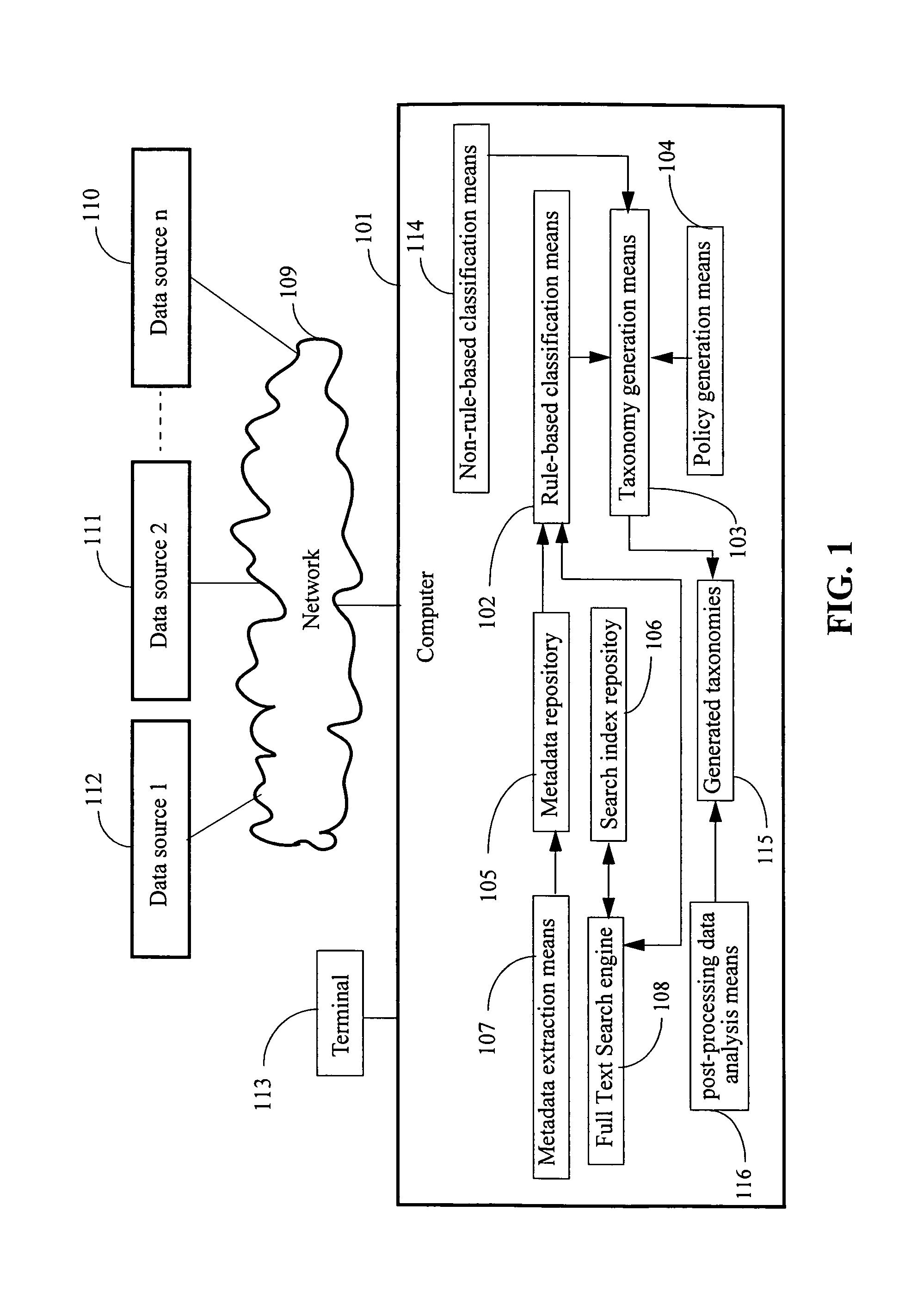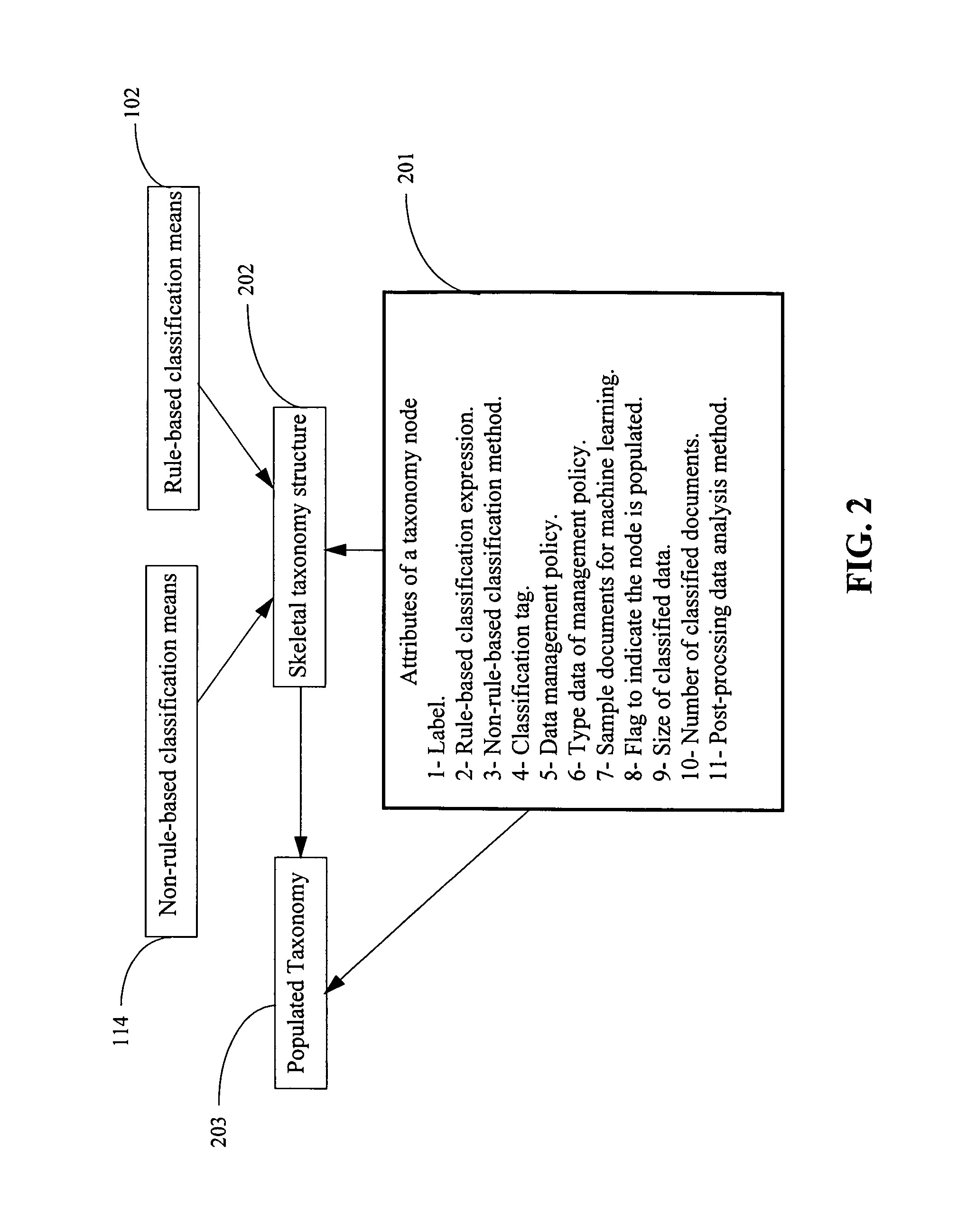Taxonomy system for enterprise data management and analysis
- Summary
- Abstract
- Description
- Claims
- Application Information
AI Technical Summary
Benefits of technology
Problems solved by technology
Method used
Image
Examples
Embodiment Construction
[0042]FIG. 1 illustrates a system for generating a taxonomy for enterprise data management and analysis according to one aspect of the invention. The system consists of a computer (101) connected to network 109, through which it communicates with data sources connected to the network. The data sources are: data source 1 (112), data source 2 (111), . . . , and data source n (110). The computer typically consists of one or more instruction processors (generally referred to as CPUs), buses, memory, storage units, power supplies, motherboards, expansion slots, and interface boards. The computer runs an operating system, and one or more application programs. For example, application programs may include software modules, sequences of instructions, routines, data structures, display interfaces, and other types of structures that execute operations of the current invention. The computer may be a server computer, Personal Computer (PC), a workstation, laptop computer, multiprocessor systems...
PUM
 Login to View More
Login to View More Abstract
Description
Claims
Application Information
 Login to View More
Login to View More - R&D
- Intellectual Property
- Life Sciences
- Materials
- Tech Scout
- Unparalleled Data Quality
- Higher Quality Content
- 60% Fewer Hallucinations
Browse by: Latest US Patents, China's latest patents, Technical Efficacy Thesaurus, Application Domain, Technology Topic, Popular Technical Reports.
© 2025 PatSnap. All rights reserved.Legal|Privacy policy|Modern Slavery Act Transparency Statement|Sitemap|About US| Contact US: help@patsnap.com



